EVENT DETAILS
Dr Helmut Thiessen (CSIRO) presenting on ‘Surfaces for the detection and inactivation of pathogens’
and
Professor Peter Kingshott (Swinburne) presenting on ‘Colloidal Crystals = Complex Surface Topography + Chemistry = Enhanced Biocompatibility ‘
Moderator: Dr Nishar Hameed (Swinburne)
Colloidal Crystals = Complex Surface Topography + Chemistry = Enhanced Biocompatibility
Professor Peter Kingshott
Swinburne University of Technology
Complex colloidal crystals are a promising material that is attracting interest in the areas of photonic band gap devices, electronics, displays, chemical sensors and biosensors, and biomaterials and tissue engineering. One of the challenges with decorating surfaces with colloidal crystals is to create ordered structures over large surface areas (cm2). This presentation will discuss how using controlled solvent evaporation it is possible to surface engineer new types of patterns and structures on surfaces with a range of colloids of different size, chemistry and shape. Precise spatial control of chemistry on surfaces provides an essential platform for the directed attachment of bioactive molecules and control over cell and bacterial attachment and growth. In addition, the crystal layers can be used as masks against deposition of plasma polymers and/or metals such as gold to create complex patterns of dimensions ranging from ms to sub 100 nms and are useful for post-modification with different chemistries for site-specific immobilisation of biomolecules. This includes using chemistries for preventing non-specific adsorption of proteins and attachment of cells, including new ways of generating high graft density polymer brushes. Also we demonstrate that the colloidal crystals can be sued to selectively graft cell adhesive or antimicrobial peptides that enhance the growth of mammalian cells or kill bacteria respectively.
In terms of mammalian cells we are targeting using colloidal crystals to control how for example stem cells and osteoblasts attach and grow on different chemical and topographic surfaces is one focus of the research that will be discussed. This includes modifying colloids with antifouling and/or peptides to provide more precise control over surface properties. We also use colloidal crystals to direct stem cell fate in specific cell types and even use them to generate induced pluripotent stems (iPSCs) from somatic cells such as fibroblasts. The presentation will also demonstrate the importance of using surface sensitive analytical tools to prove the presence of the different surface chemistries. These include x-ray photoelectron spectroscopy (XPS), SEM, AFM, and high-resolution time-of-flight secondary mass spectrometry (ToF-SIMS) imaging. Finally, the presentation will provide details of cell and bacterial attachment results to polymers and biopolymer surfaces where the properties have a profound effect on the responses. The potential of these new materials in biointerface science is discussed.
References
- Shi, et al., ACS Appl. Mater. Inter. 2021, 13(18), 20982–20994
- Babaie, et al., Colloid. Surf. B: Biointerf. 2020, 194, 111133.
- S. Diba, et al., Adv. Funct. Mater. 2019, 29(29), 1904262.
- Cui, et al., ACS Appl. Mater. Inter. 2019,11(4), 3679-3689.
- S. Diba, et al., Adv. Colloid Inter. Sci. 2018, 261, 102-127.
- Pingle, et al., Small 2018, 14(14),1703574.
- Boden, et al., ACS Appl. Mater. Inter. 2018, 10(3), 2264-2274.
- -Y. Wang, et. Al. Sci. Rep. 2016, 6, 36845.
- -Y. Wang, et al., J. Mater. Chem. B 2015, 3(12), 2545-2552.
- Singh, et al., Adv. Funct. Mater. 2011, 21(13), 2556–2563
- Ogaki, et al., Adv. Mater. 2011, 23(16), 1876–1881
Peter Kingshott is Professor of Surface Engineering in The Department of Chemistry and Biochemistry at Swinburne University of Technology in Melbourne. He is also Deputy Director of the ARC Industrial Training Centre in Surface Engineering for Advanced Materials (SEAM). He completed his PhD at UNSW and CSIRO in 1999 and was a postdoc at CSIRO, University of Washington and RWTH Aachen before becoming a Senior Scientist at the Danish Polymer Centre at Riso National Laboratory. He became an Associated Professor at the Interdisciplinary Nanoscience Centre at Aarhus University, Denmark (2006-2010) before joining Swinburne as Professor of Surface Engineering. His research has a strong emphasis on controlling the interfacial interactions of biological materials with advanced material surfaces. The focus is on the development of new 1, 2, 3, and 4D surface micro- and nanopatterning approaches aimed at improving our understanding of how biology and man-made materials interact with each other. Application areas include medical implants, infection control, tissue engineering and regenerative medicine, and industrial biofouling. He has published over 180 papers and has a H-Index of 50 and over 9000 citations. He research has also included focus on developing surfaces for industrial applications where he has 10 patents/patent applications.
Surfaces for the detection and inactivation of pathogens
Dr Helmut Thissen
CSIRO Manufacturing
The fight against pathogens ranging from bacteria to viruses is not new, but the rapid rise in antimicrobial resistance (AMR) and the recent COVID-19 pandemic have highlighted the importance of this ongoing battle. Here, surfaces play an extraordinarily important role both in regard to technologies enabling the detection of pathogens and the inactivation of pathogens. In the case of detection technologies, the importance of detecting and monitoring pathogens and how they move across the domains of healthcare, agriculture and the environment, cannot be overstated. In the case of intervention technologies, it is important to point out that all surfaces on medical devices and healthcare related environments provide a potential source of infections. To address these challenges we have developed highly effective coating platforms that reduce non-specific biointerfacial interactions while also allowing the display or release of bioactive agents in controlled densities and ratios. Specifically, we have employed crosslinked polymer coatings that can be deposited in a single step to achieve effective control over protein fouling and cellular attachment. Moreover we have demonstrated the ability to capture biomarkers and pathogens, and have demonstrated the effective prevention of pathogen colonisation and biofilm formation. This has been achieved by incorporating additional antimicrobial compounds in these coatings ranging from peptides to quorum sensing inhibitors. Here, we often rely on exploiting multiple layers of defence at once to achieve improved anti-pathogen efficacy, as well as our developing understanding of the microbial life cycle, in particular in the context of biofilm communities. Our surface analytical results combined with our detailed analysis of the biological response in vitro and in vivo provide evidence that the effective coatings can be developed for the detection and inactivation of pathogens. It is expected that our surface technologies will have significant impact in the field of biomedical devices.
Helmut Thissen obtained his PhD in Chemistry from RWTH Aachen University in Germany, where he also started to translate biomedical research into the clinic while working at the Interdisciplinary Centre for Clinical Research. He joined the Commonwealth Scientific and Industrial Research Organisation (CSIRO) in 1998, where he now leads a team with more than 25 scientists that is focused on the interdisciplinary topics of biomedical devices and regenerative medicine, and here in particular the effective control of biointerfacial interactions. While he has published more than 160 peer-reviewed journal publications and book chapters, his strong translational focus is reflected by more than 10 patent families, his role as Director of CSIRO’s Biomedical Materials Translational Facility (BMTF) and the translation of research results into multiple successful biomedical products. Prestigious awards include the CSIRO Medal for Research Achievement and the Newton Turner Award for Exceptional Senior Scientists. Importantly, he has served his scientific community in many different roles, including President of the Australasian Society for Biomaterials and Tissue Engineering (ASBTE), Program Leader of the Cooperative Research Centre (CRC) for Polymers, chair of multiple national and international conferences and mentor for many early career scientists.
Email seam@swinburne.edu.au if you have any questions.
PRESENTED BY:
Dr Helmut Thiessen (CSIRO) and Professor Peter Kingshott (Swinburne)
DATE
22 July 2021


